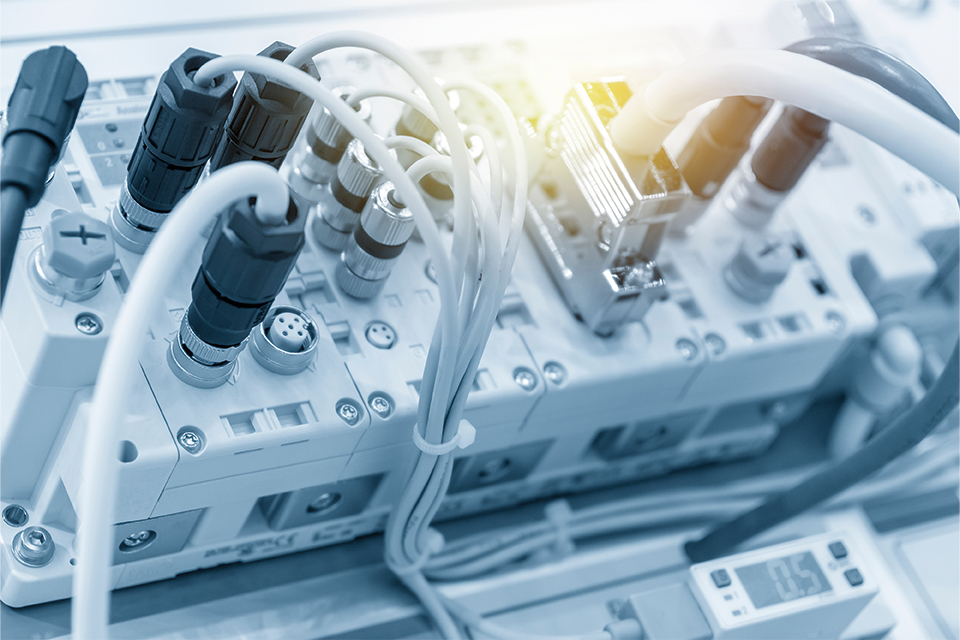2023-04-06
Instrument Interfaces

There are many ways to extract measurement results from monitoring devices. Setting aside manual readouts from indicators, the simplest form of is real-time outputs on hard-wired signals.
The parameter reading then typically appears on a dedicated pair of wires in the shape of a voltage or current proportional to the reading. In similarity, status signals can be conveyed using mechanical relays which open and close with status changes.
Hard-wired Signals vs. Communication Protocols
Hard-wired signals once were the industry standard, and they may still be in use today, in particularly for simple measurement devices such as temperature and pressure sensors. However, for more complex types of monitors where a single device can produce multiple output signals, both floating values and statuses, it is impractical and error-prone to use a set of wires for each of the signals. Instead, data is transferred using digital communication protocols. This is nowadays industry standard for most measurement devices, and also available for many types of “simple” sensors.
The 4-20 mA Standard
A measurement result that can take any value within a reasonable range, for example a temperature, may be referred to as a floating value. When it comes to such floating values, the result can be represented on electrical wires either by a voltage or by a current. The most common standard is a “4-20 mA” current, linearly proportional to a measurement range specified in the datasheet of the sensor. It is often referred to as a “current loop” since the electrical current goes out on one terminal pin, passes one or more sensing devices on its way, and then returns on another terminal pin to close the loop.
Starting at 4 and not 0 mA makes it possible to detect a broken connection. If the reading is 0 mA, it is not because of a low temperature but because of a sensor or cable failure. In some cases, currents below 4 but above 0 mA can be used for simple error status signaling.
There are also sensors that utilize the full range 0-20 mA to represent the reading. It gives slightly better precision in the conveyed data for a given measurement range, but it may then be less obvious to detect a wire failure.
Other Legacy Signals
Some units offer hard-wired voltage signals, typically 0-10 or 0-24 VDC, linearly proportional to a measurement range. However, it is less common than current signals, mainly because an internal resistance in the cable between the sensor and the receiver/sensing device will result in a voltage drop that will make the reding appear lower than it should. This does not happen in current loops, up to the limit of the voltage available to drive the current.
Hard-wired status signals are usually generated by mechanical open/close relays. Usually, “all good” is represented by an actively closed circuit, allowing a simple way to detect a broken wire.
Digital Communication
Nowadays, most monitoring devices come with digital communication interfaces allowing a multitude of measurement values and status signals to be conveyed using communication protocols over communication cables or wireless connections. There are also “simple” measurement devices that have digital communication interfaces.
Digital communication is mostly about serial communication, that is a stream of digits (0/1) flowing between two nodes. Hardware-wise, the RS-232 and its sibling RS-485 standards have been frequently applied and is still in use in many types of devices. Nowadays, many devices also support the Ethernet interface, notably used in TCP/IP and si20milar communication protocols over Internet and Intranet communication networks.
Communication Protocols
There must also be protocols riding on the communication wires. A protocol is the language by which two nodes (i.e. the two devices in the ends of a communication line) speak to each other. Many device manufacturers have their own protocols. Some may be proprietary, and some are made public to allow suppliers of data management devices to interface the units. At best, the protocol is one of the standard protocols which have gained grounds within the industry during the past decade or so. Examples of such protocols (or families of protocols – there are often “dialects” within a protocol standard) are Modbus, Profibus, and Profinet.
Rest assured that there are ways to get access to the data generated by an instrument, but be prepared that it might take some engineering skills to get it all working!
